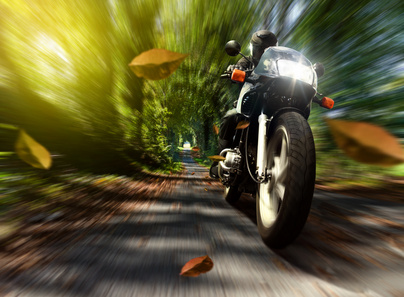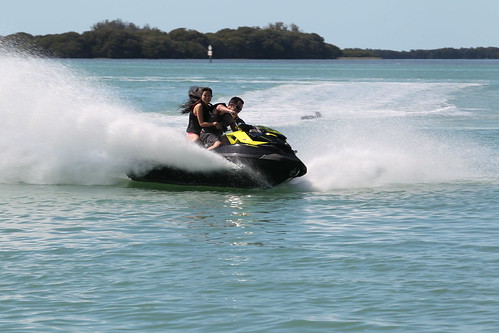By: Jerry Smith
When gas prices started to skyrocket last year, you probably felt pretty smug about owning a fuel-efficient motorcycle. You rode past filling stations where SUV owners stood emptying their wallets into gas pumps, and you grinned like a cat with a fresh mouse. This year, though, with gas topping $4 a gallon you’re a bit less smug, and maybe a bit more worried as each tank of gas you put in your bike eats up all of a $20 bill and part of another one. Suddenly, even getting 40 or 50 mpg doesn’t seem so comforting.
But you might be surprised to learn you aren’t already getting the best gas mileage you can. By checking a few of your bike’s components, and changing a few of your own habits, you can stretch each gallon of gas even further than you already do, and bring that grin back to your face.
1. Check your bike’s tire pressure. In addition to negatively affecting handling and braking, underinflated tires cause drag that wastes gas. You should check tire pressure at least once a week, and before every long ride. A good way to remind yourself to do this is to write your front and rear tire pressures on a piece of tape and stick it to the inside of your windscreen, or on the handlebar, anywhere you can see it from the saddle.
2. Check your motorcycle’s air filter. A dirty air filter decreases gas mileage. But motorcycle manufacturers don’t always make it easy to check the air filter—on some models it seems as if you could build another bike with the pile of parts you have to take off—so many stay in service well past their useful life. A gradual drop in gas mileage is a good tip-off that it’s time to burrow in there and have a look. If you replace the filter, be sure to write down the mileage and the date so you’ll know when it’s time to check it again.
3. Gear up. Add a tooth to your countershaft sprocket, or take a couple of teeth off your back sprocket. The higher the final-drive gearing, the fewer revs your engine turns at any given rpm compared to stock. This is especially effective if you commute on your motorcycle, or spend a lot of time on the highway in top gear. Acceleration will suffer a bit, but the increase in mileage will make up for it.
4. Short shift. When you’re going up through the gears, don’t hold each one all the way to redline. Shift early whenever you don’t need quick acceleration. This isn’t to say you should lug the engine. Instead, find the lowest part of the powerband where the engine runs smoothly and pulls strongly, and shift before the tach needle swings out of that zone. Fewer revs equal better mileage.
5. Synch the carbs. If your bike has more than one carburetor, make sure they’re all working in concert instead of against each other. Ideally, all the carbs feed the engine the same amount of fuel/air at a given rpm as the others. If one “leads” the others, or “lags,” gas mileage suffers. A ragged, inconsistent, or wandering idle is often a sign that the carbs need to be synched.
6. Lube your bike’s chain. A dry chain causes drag and friction, decreasing gas mileage. A drive chain is essentially a series of machined bearing surfaces. Even O-ring chains, which have lubricating grease sealed into the space between the pin and the bushing, need a shot of lube on the unsealed rollers now and then to keep them rolling smoothly and to reduce wear. Make sure you shoot some lube on the rear sprocket teeth, too.
7. Adjust the chain. A loose chain uses engine rpm to take up its slack instead of turning the rear wheel. A tight chain increases drag on the driveline, making the engine work harder and use more gas.
8. Go easy on the throttle. Accelerate smoothly away from stops. Pretend you have a very nervous passenger behind you who’s afraid of falling off the back of the bike. And don’t “blip” the throttle at stops.
9. Use your motorcycle for errands. If all you need is a loaf of bread and a quart of milk, take your bike, and put the groceries in your saddlebags. If what you need to get can fit in your jacket pocket or a backpack, there’s no reason to take the car.
10. Buy the right gas. If you’ve read the owner’s manual that came with your motorcycle, you’re probably in the minority. You might be surprised to learn you don’t need to feed your ride premium gas.
Posted with permission from the October 2008 issue of Rider ® www.ridermagazine.com. Copyright 2009, Affinity Group Inc. All rights reserved. For more information about reprints from Rider, contact Wright’s Reprints at 877-652-5295.
Originally published in the October 2008 issue of Rider Magazine



























































































